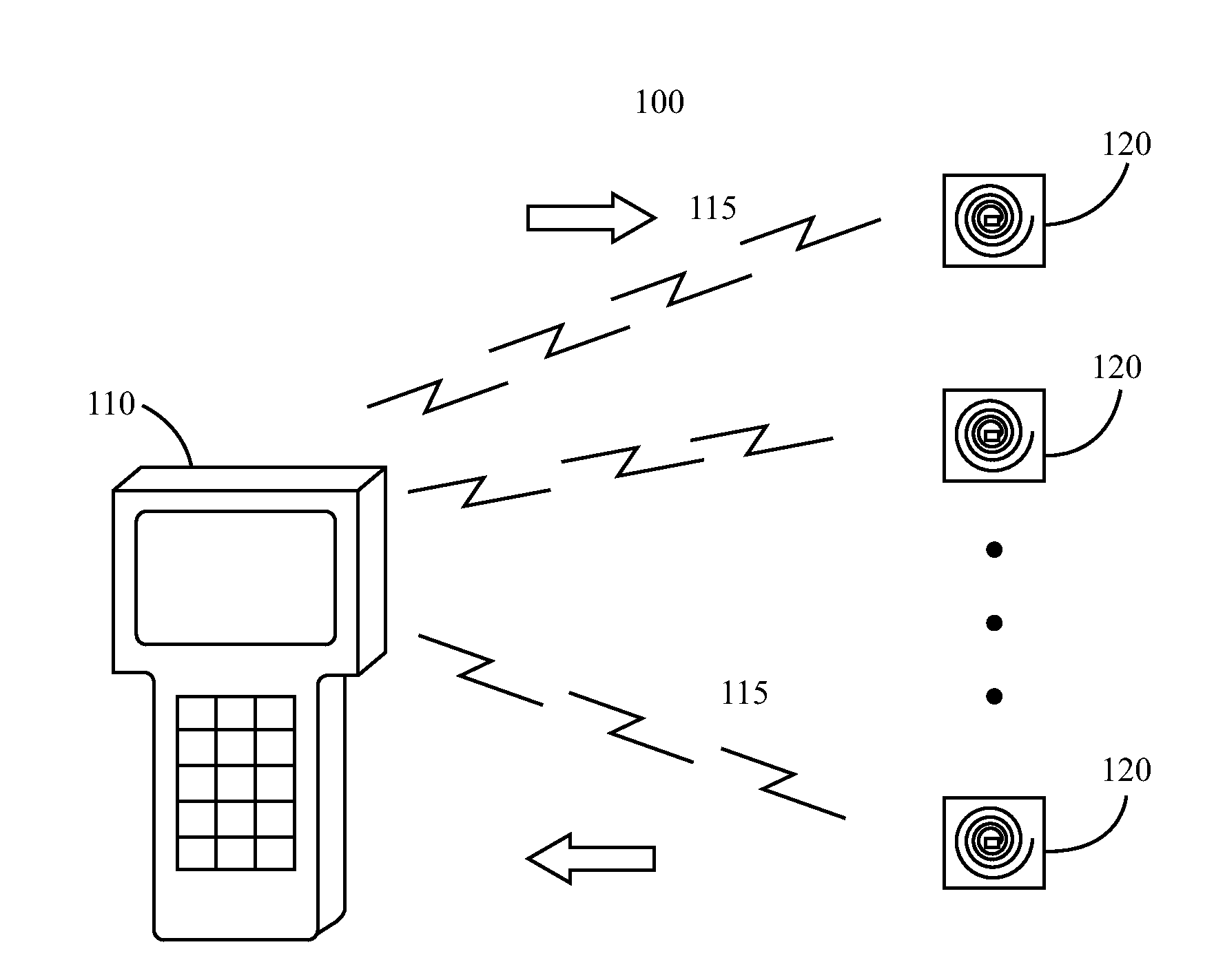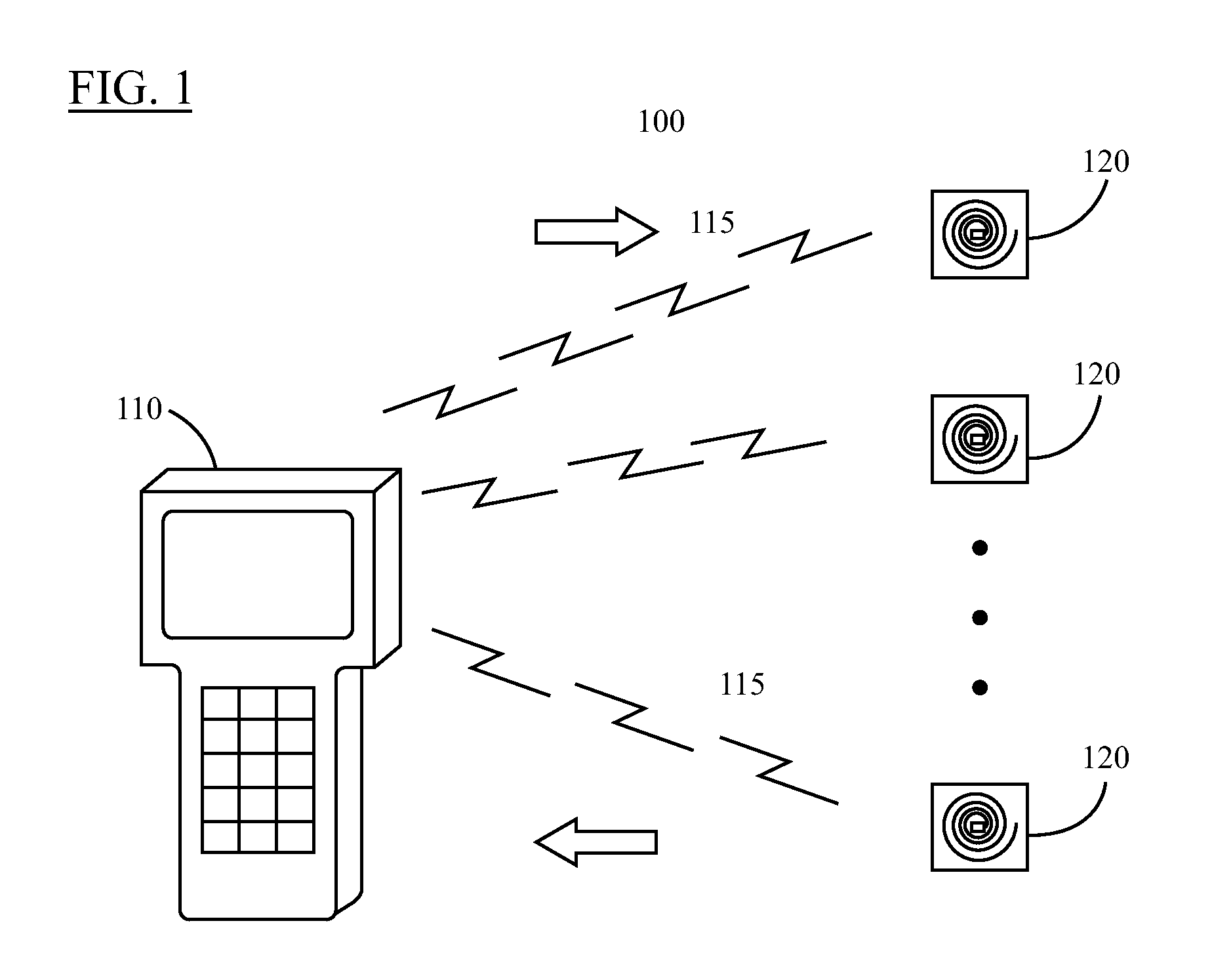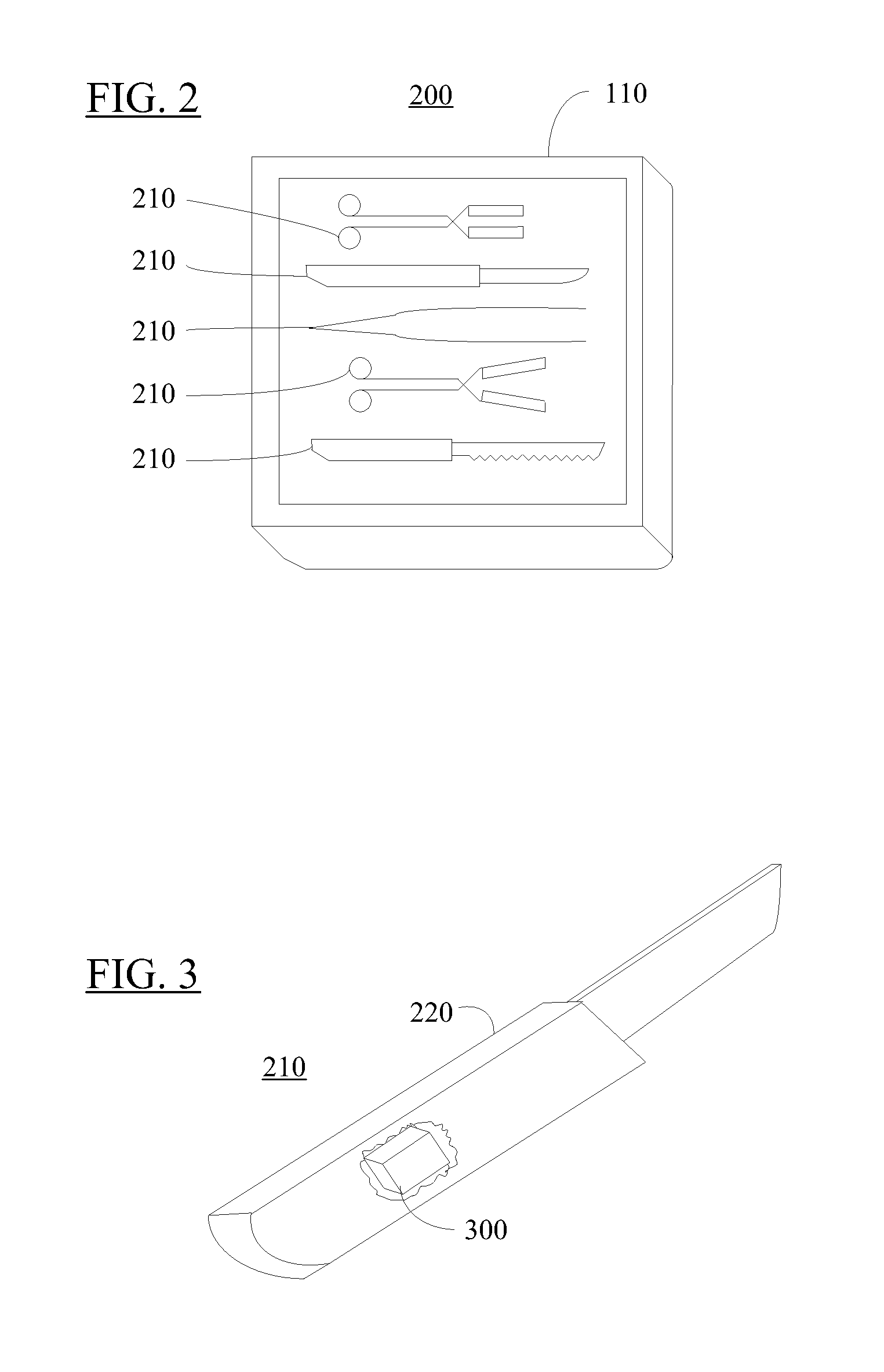Method and Apparatus for Surgical Instrument Identification
a surgical instrument and identification method technology, applied in the field of surgical instrument identification methods and equipment, can solve the problems of limited information that the symbols can contain, damage to instruments, damage to items and some types of rubber, etc., and achieve the effect of reducing handling costs
- Summary
- Abstract
- Description
- Claims
- Application Information
AI Technical Summary
Benefits of technology
Problems solved by technology
Method used
Image
Examples
Embodiment Construction
[0029]The following description is intended to convey a thorough understanding of the invention by providing specific embodiments and details involving automated identification and accounting of surgical instruments and instrument kits. It is understood, however, that the invention is not limited to these specific embodiments and details, which are exemplary only. It further is understood that one possessing ordinary skill in the art, in light of known systems and methods, would appreciate the use of the invention for its intended purposes and benefits in any number of alternative embodiments, depending upon specific design and other needs.
[0030]As used herein, the terms “surgical instrument” or simply “instrument” will refer to any type of standard surgical instrument, including scalpels, forceps, tweezers, clamps, spreaders, etc., as well as procedure and even discipline specific instrument such as, for example, orthopedic surgical equipment. The principles disclosed herein will a...
PUM
 Login to View More
Login to View More Abstract
Description
Claims
Application Information
 Login to View More
Login to View More - R&D
- Intellectual Property
- Life Sciences
- Materials
- Tech Scout
- Unparalleled Data Quality
- Higher Quality Content
- 60% Fewer Hallucinations
Browse by: Latest US Patents, China's latest patents, Technical Efficacy Thesaurus, Application Domain, Technology Topic, Popular Technical Reports.
© 2025 PatSnap. All rights reserved.Legal|Privacy policy|Modern Slavery Act Transparency Statement|Sitemap|About US| Contact US: help@patsnap.com



